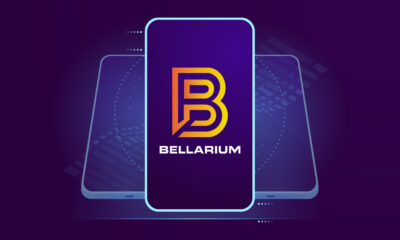Australia News
Navigating Immigration to Australia from USA: A Complete Guide for Aspiring Migrants

If you’re considering making the move from the USA to Australia, you’re not alone. Many people are drawn to Australia for its beautiful landscapes, friendly culture, and strong economy. However, the immigration process can seem a bit tricky at first. This guide will help you understand how to navigate immigration to Australia from the USA, covering everything from visa options to application tips. Let’s break it down step by step so you can feel more confident about your journey.
Key Takeaways
- Research different visa types to find the best fit for your situation.
- Keep all your documents organized and ready for submission.
- Stay informed about the latest immigration policies and requirements.
- Consider consulting with a registered migration agent for personalized advice.
- Prepare for cultural adjustments once you arrive in Australia.
Understanding The Australian Immigration System
Okay, so you’re thinking about moving to Australia from the USA? Awesome! But before you start picturing yourself on Bondi Beach, it’s a good idea to get a handle on how their immigration system works. It can seem like a maze at first, but breaking it down into smaller parts makes it way less scary.
Overview Of Immigration Categories
Australia’s immigration system is designed to bring in people who can contribute to their economy and society. They’ve got different categories to cover various situations. Here’s a quick rundown:
- Skilled Migration: This is for people with skills and qualifications that Australia needs. Think doctors, engineers, IT professionals, etc.
- Family Migration: If you have family members who are Australian citizens or permanent residents, they might be able to sponsor you.
- Work Visas: These are temporary visas that allow you to work in Australia for a specific period. Sometimes, these can lead to permanent residency.
- Business Innovation and Investment: For people who want to invest in or start a business in Australia.
- Other Visas: There are also visas for students, tourists, and people seeking asylum.
It’s important to figure out which category fits your situation best. A list of Australian visas is available to help you determine the best option.
Key Eligibility Requirements
So, what does it take to be eligible to immigrate to Australia? Well, it depends on the visa you’re applying for, but here are some common requirements:
- Age: Some visas have age limits. Usually, younger applicants score more points.
- English Language Proficiency: You’ll likely need to prove you can speak, read, and write English. Tests like IELTS or TOEFL are usually accepted.
- Skills and Qualifications: If you’re applying for a skilled visa, your skills and qualifications need to be relevant to an occupation on Australia’s skilled occupation list.
- Health and Character: You’ll need to pass health checks and provide police clearances to show you’re of good character.
- Points Test: Many skilled visas use a points-based system to assess your eligibility.
Points-Based System Explained
Okay, let’s talk about the points system. Australia uses a points-based system for many of its skilled visas. Basically, you get points for things like your age, education, work experience, and English language ability. The more points you have, the better your chances of getting an invitation to apply for a visa.
Here’s a simplified example of how points might be awarded:
| Factor | Points |
|---|---|
| Age (25-32) | 30 |
| English Language (Superior) | 20 |
| Work Experience (5+ years) | 15 |
| Education (Bachelor’s) | 15 |
| Total | 80 |
Keep in mind that the points required can change, and different visas have different point thresholds. It’s a good idea to check the latest requirements on the Department of Home Affairs website. Also, remember that immigration laws can change, so it’s always a good idea to consult with a migration agent or lawyer before making any decisions.
Common Visa Pathways For USA Migrants
So, you’re an American dreaming of living Down Under? Awesome! Let’s break down some of the most common visa routes for folks like you.
Partner Visa Options
Okay, so if you’re coupled up with an Australian citizen, permanent resident, or eligible New Zealand citizen, this could be your ticket. The Partner Visa lets you live in Australia based on your relationship. There are a couple of routes here, depending on whether you’re already married or in a de facto relationship. The process can feel pretty invasive, with lots of scrutiny on your relationship, and it can be expensive. Plus, processing times can be long. But on the bright side, you don’t need a skills assessment or points test, and you get work rights pretty quickly. Medicare access is a bonus too! Just remember, if the relationship goes south, your visa could be in trouble.
Employer-Sponsored Visas
Got skills that Aussie employers are craving? An employer-sponsored visa might be the way to go. Basically, an Australian employer nominates you to fill a position they can’t find a local for. There are a few different streams, like the Temporary Skill Shortage visa (temporary skilled visas) and the Employer Nomination Scheme. The processing times can vary, but a big pro is that it can lead to permanent residency. Keep in mind that your application is tied to your employer, so if you lose your job, your visa could be at risk.
Skilled Independent Visas
If you’re a highly skilled worker with no employer lined up, the Skilled Independent visa (subclass 189) could be a good fit. This visa lets you live and work permanently anywhere in Australia. You’ll need to pass a points test based on things like your age, education, and work experience. The higher your score, the better your chances of getting invited to apply. The cost is relatively low compared to other options, and you have freedom of employment. However, there’s no guarantee you’ll get invited, even if you meet the eligibility criteria.
Preparing Your Immigration Application

Gathering Necessary Documents
Okay, so you’re thinking about moving to Australia from the USA? Awesome! But before you start picturing yourself on Bondi Beach, let’s talk paperwork. Gathering all the right documents is super important. Missing something can really slow things down, or even get your application denied. Think of it like this: you’re building a case for why Australia should let you in. You need evidence!
Here’s a general idea of what you might need:
- Passport and birth certificate: Obvious, right? But make sure they’re valid!
- Educational transcripts and diplomas: Prove you have the skills you say you do.
- Proof of work experience: Letters from employers, pay stubs, job descriptions. The more, the better.
- Police clearances: Shows you don’t have a criminal record. Get these from every country you’ve lived in for a significant amount of time.
- Health records: You’ll probably need a medical exam to show you’re healthy.
- Relationship documents (if applicable): Marriage certificate, photos, joint bank accounts, etc., if you’re applying with a partner.
It sounds like a lot, and it is! But staying organized will save you a ton of stress later. A migration agent can help you with this.
Understanding Application Fees
Alright, let’s talk money. Applying for an Australian visa isn’t free, and the fees can add up quickly. It’s important to know what to expect so you can budget accordingly. The exact amount depends on the type of visa you’re applying for, and fees can change, so always check the official Department of Home Affairs website for the most up-to-date information.
Here’s a rough idea of what you might be looking at:
- Skilled Independent visa: Expect to pay several thousand AUD.
- Partner visa: Can be even more expensive, especially if you’re applying from outside Australia.
- Employer-sponsored visa: Your employer might cover some of the costs, but you’ll likely still have to pay something.
Don’t forget to factor in other costs, like:
- Medical exams
- Police clearances
- Translation of documents (if needed)
- Migration agent fees (if you choose to use one)
Tips For Completing Forms
Okay, you’ve got your documents, you know about the fees… now it’s time to fill out those forms. This is where things can get tricky. Accuracy is key here. Even a small mistake can cause delays or rejection. Read every question carefully, and don’t guess if you’re not sure.
Here are some tips to help you get it right:
- Read the instructions carefully: Seriously, don’t skip this step. The instructions are there for a reason.
- Answer all questions: Leaving something blank can raise red flags. If a question doesn’t apply to you, write "N/A" (not applicable).
- Be consistent: Make sure the information you provide on the forms matches the information in your documents.
- Double-check everything: Before you submit, review every page to make sure you haven’t made any mistakes. Ask a friend or family member to look it over too.
- Keep a copy: Make a copy of everything you submit for your records. This will be helpful if you need to refer back to it later. If you need help, consider getting visa consultant to help you through the process.
Navigating The Visa Application Process

Okay, so you’ve figured out which visa is right for you and you’re ready to actually apply. This part can feel like a huge hurdle, but breaking it down into steps makes it way less scary. The key is to be organized and pay close attention to detail. Seriously, even a small mistake can cause delays or even rejection. Let’s get into it.
Step-By-Step Application Guide
Alright, let’s walk through the general steps. Keep in mind that the specifics can vary depending on the visa type, so always double-check the official requirements on the Department of Home Affairs website.
- Gather Your Documents: This is where you collect all the necessary paperwork. Think birth certificates, passport, skill assessments, employment records, and anything else the visa requires. Make copies of everything, just in case.
- Complete the Application Form: Fill out the application form carefully and honestly. Double-check all the information before you submit it. Any discrepancies can raise red flags.
- Pay the Application Fee: Visa application fees can be pretty hefty, so be prepared. Make sure you use an accepted payment method.
- Submit Your Application: Once you’re sure everything is complete and accurate, submit your application online or by mail, depending on the instructions.
- Await Processing: Now comes the waiting game. Processing times can vary widely, so try to be patient. You can usually track the progress of your application online.
- Attend an Interview (If Required): Some visa types require an interview. If you’re asked to attend one, prepare by reviewing your application and practicing common interview questions.
Common Pitfalls To Avoid
Trust me, there are a few common mistakes people make that can really mess things up. Here’s what to watch out for:
- Incomplete Applications: Missing documents or unanswered questions are a surefire way to delay your application. Double-check everything before you submit.
- Incorrect Information: Even a small typo can cause problems. Make sure all the information you provide is accurate and consistent.
- Failing to Meet Eligibility Requirements: Make sure you actually meet all the requirements for the visa you’re applying for. Don’t waste your time and money on a visa you’re not eligible for.
- Ignoring Deadlines: Pay attention to any deadlines and make sure you submit your application and any required documents on time.
- Not Seeking Help When Needed: If you’re feeling overwhelmed, don’t be afraid to seek help from a migration agent. They can guide you through the process and help you avoid costly mistakes.
Processing Times And Expectations
Okay, let’s talk about processing times. This is probably the most frustrating part of the whole process because it can take a while, and it’s hard to predict exactly how long it will take. Processing times vary depending on the visa type, the complexity of your application, and the current workload of the Department of Home Affairs. You can check the estimated processing times on the Department of Home Affairs website, but keep in mind that these are just estimates. Don’t be surprised if your application takes longer than expected. Try to be patient and avoid contacting the department too frequently, as this can actually slow down the process. Here’s a general idea of what to expect:
- Initial Assessment: This can take a few weeks to a few months.
- Document Verification: This can also take several weeks or months, depending on the complexity of your case.
- Final Decision: Once all the checks are complete, you’ll receive a decision on your application. This can take anywhere from a few weeks to several months.
It’s a good idea to start planning your move to Australia well in advance, as the visa application process can take longer than you think. And remember, staying organized and being patient are key to a successful application.
Post-Application Considerations
So, you’ve hit ‘submit’ on your Australian visa application. Congrats! But the journey isn’t over yet. There are still a few things to keep in mind as you wait and even after you (hopefully!) get approved.
What To Do After Submission
Okay, first things first: patience. The waiting game can be tough, but try to stay busy and avoid constantly checking the status (easier said than done, I know!).
- Keep an eye on your email. Immigration will contact you if they need more info. Don’t miss these emails! Set up alerts if you have to.
- Make sure your contact details are up-to-date. If you move or change your email, let them know ASAP. This is super important to avoid missing important updates about your skilled independent visas.
- Resist the urge to submit another application. This can actually slow things down. Trust the process (as much as you can).
Preparing For Life In Australia
Let’s assume the best: you’re moving to Australia! Now’s the time to start planning the practical stuff.
- Start researching neighborhoods. Where do you want to live? What’s the cost of living like? What are the schools like if you have kids?
- Look into opening an Australian bank account. It’ll make things easier when you arrive. Some banks let you start the process online before you even get there.
- Think about shipping your belongings. Get quotes from different companies and figure out what you want to bring versus what you’ll buy new. Don’t forget to look into employer-sponsored visas if you are planning to work.
- Brush up on your Aussie slang! You’ll hear terms like "arvo" (afternoon), "brekkie" (breakfast), and "thongs" (flip-flops). It’s all part of the fun.
Understanding Your Rights As A Migrant
Once you’re in Australia, it’s important to know your rights. This will help you navigate life and ensure you’re treated fairly.
- Learn about your visa conditions. What are you allowed to do? How long can you stay? Are there any restrictions on working or studying?
- Understand your workplace rights. Australia has strong labor laws. Know your minimum wage, leave entitlements, and protection against unfair dismissal.
- Familiarize yourself with the Australian legal system. Hopefully, you won’t need it, but it’s good to know your rights and responsibilities. There are resources available to help you understand your partner visa options.
- Know where to get help if you need it. There are migrant resource centers and legal aid services that can provide support and advice.
Resources For Aspiring Migrants
Okay, so you’re serious about making the move to Australia. That’s awesome! But where do you even start looking for reliable info? It can feel like you’re drowning in websites and forums, some helpful, some… not so much. Here’s a breakdown of resources I’ve found useful, and hopefully, you will too.
Government Websites And Tools
First things first, go straight to the source. The Australian government has a bunch of websites dedicated to immigration. These are your go-to spots for the most accurate and up-to-date information.
- The Department of Home Affairs website is the big one. It has everything from visa options to application requirements. You can even start your application there.
- Check out the SkillSelect website. If you’re going the skilled migration route, this is where you’ll submit your Expression of Interest (EOI).
- Don’t forget about state and territory government websites. They often have their own skilled occupation lists and specific requirements if you’re looking to settle in a particular area. For example, if you’re interested in South Australia, check out their skilled migration page. They might have special programs or incentives.
Support Groups And Communities
Moving to a new country can be isolating, so connecting with others who’ve been through it is a lifesaver. There are tons of online forums and social media groups where you can ask questions, share experiences, and get support. Plus, you can find people who are also going through the migration process at the same time as you!
- Facebook groups are a great place to start. Search for groups like "Americans in Australia" or "Australian Immigration USA." You’ll find a mix of people who are already living in Australia and those who are planning to move.
- Online forums, like PomsinOz, can be treasure troves of information. People share their timelines, application tips, and general advice about life in Australia.
- Consider joining local community groups once you arrive. This is a great way to meet people, build a network, and feel more connected to your new home.
Consulting With Migration Agents
Look, the Australian immigration system can be complex. Sometimes, it’s worth getting professional help. A registered migration agent can assess your situation, advise you on the best visa options, and guide you through the application process. They know the ins and outs of the system and can help you avoid costly mistakes. Just make sure they are registered with the Office of the Migration Agents Registration Authority (OMARA).
Here’s what a migration agent can do for you:
- Visa assessment: They’ll evaluate your eligibility for different visas.
- Application assistance: They’ll help you prepare and lodge your application.
- Legal advice: They can provide advice on complex immigration matters.
- Representation: They can act on your behalf in dealing with the Department of Home Affairs.
It’s a good idea to get quotes from a few different agents before making a decision. Ask about their experience, fees, and success rates. Remember, a good migration agent can save you a lot of time, stress, and potentially money in the long run. They can provide a free immigration assessment form to get you started.
Wrapping It Up
So, there you have it! Moving to Australia from the USA can feel like a big task, but with the right info and a bit of patience, it’s totally doable. Remember, each path to residency has its own set of rules and steps. Take your time to figure out what works best for you. Don’t forget to keep an eye on the latest immigration updates, as things can change pretty quickly. If you have questions or want to share your own experiences, drop a comment below. Good luck on your journey to the land down under!
Frequently Asked Questions
What types of visas can I apply for to move to Australia from the USA?
There are several types of visas you can apply for, including partner visas, employer-sponsored visas, and skilled independent visas.
How do I know if I qualify for an Australian visa?
To qualify, you need to meet specific requirements, like age, skills, and English language proficiency. You can use the points-based system to check your eligibility.
What documents do I need for my visa application?
You will need various documents such as your passport, proof of identity, qualifications, and health checks.
How long does the visa application process take?
Processing times can vary widely depending on the type of visa you apply for, ranging from a few months to over a year.
Can I appeal if my visa application is denied?
Yes, you can appeal the decision, but the process can be complex and may require legal assistance.
What should I do after my visa application is submitted?
After submitting your application, you should prepare for your move by researching living in Australia and understanding your rights as a migrant.
-

 Technology7 days ago
Technology7 days agoWhat to Know Before Switching Cell Phone Network Services in 2025
-

 Press Release7 days ago
Press Release7 days agoGlobal Compound Feeds and Additives Industry Report: Market Expansion and Competitive Insights to 2035
-

 Press Release5 days ago
Press Release5 days agoCrypto WINNAZ Launches First On-Chain Yield Engine for Meme Coins, Enabling 20x–300x Returns
-

 Press Release2 days ago
Press Release2 days agoBellarium ($BEL) Price Prediction: Could It Hit $5 by 2026?
-

 Press Release2 days ago
Press Release2 days agoWhy Alaxio (ALX) Is a Top Pick for Smart Crypto Investors
-

 Business1 day ago
Business1 day agoHow Managed IT Solutions Help Small Teams Compete at Enterprise Scale
-

 Press Release11 hours ago
Press Release11 hours agoFill-Finish Pharmaceutical Contract Manufacturing Market Expected to Flourish Amid Biopharmaceutical Boom and Global Outsourcing Trend by 2035
-

 Press Release11 hours ago
Press Release11 hours agoCat Food Market Forecast 2035: Natural Ingredients, Pet Wellness to Lead the Way










